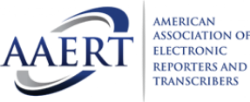The Importance of Effective Trial Presentations in Contemporary Legal Practice
Why Strong Test Discussions Are Key to Legal Success
The importance of strong trial discussions can not be overstated in the realm of lawful method. The nuances of properly adapting these presentations to varied juror backgrounds introduce intricacies that merit further expedition, specifically in the context of accomplishing favorable end results in trials.
Importance of Effective Interaction
Just how can efficient communication form the result of a legal test? Reliable interaction is vital in a legal setting, as it works as the avenue where debates, evidence, and lawful principles are conveyed to discretionary. Clear expression of truths and legal precedents enables an influential presentation that can significantly affect the decision-making process. In the courtroom, the capacity to present intricate details in an accessible fashion is necessary, as jury participants may not have a legal history.
Additionally, efficient interaction promotes connection and trust in between lawyers and their clients, enhancing partnership and guaranteeing that all events are lined up in their goals. It likewise plays a crucial duty in court option and involvement, where the ability to get in touch with jurors can impact their receptiveness to the case. Additionally, non-verbal communication, such as body language and eye contact, contributes to the overall impression an attorney makes, reinforcing verbal messages.
Ultimately, mastering effective interaction can bring about an extra engaging and systematic discussion, boosting the probability of a desirable judgment. Therefore, attorneys need to prioritize developing their communication skills as a cornerstone of their trial preparation and strategy.

Crafting a Compelling Story
Effective communication lays the groundwork for crafting an engaging story in legal trials. A well-structured narrative not only involves the court but likewise makes clear complex lawful concerns. The goal is to present the truths in a means that reverberates emotionally and logically with the target market, allowing them to understand the case from the client's perspective.
To achieve this, attorneys should identify the central theme or message of the case, which works as the backbone of the story. Each item of proof and witness testament should be woven into this theme, reinforcing it as opposed to interfering with it. This produces a cohesive storyline that is easy for the jury to follow.
Additionally, making use of relatable personalities-- be it the plaintiff, defendant, or key witnesses-- can humanize the case, making it much more unforgettable. Attorneys should likewise consider the pacing of their narrative, making sure that essential minutes are highlighted which the tale unravels in a logical progression.
Eventually, an engaging narrative transforms the presentation of truths into a persuasive argument, guiding the jury towards a desirable conclusion while guaranteeing that the intricacies of the legal system remain available and reasonable.
Making Use Of Aesthetic Help
Visual aids play an important duty in boosting the understanding and retention of details throughout lawful tests. By providing complicated data and debates aesthetically, lawyers can simplify elaborate details, making them more his response accessible to jurors. Graphes, charts, and pictures can successfully show essential factors, allowing jurors to grasp essential realities promptly.
Using aesthetic help not only aids in quality but likewise involves the audience's focus. Jurors are more probable to remember information provided aesthetically than through verbal explanations alone. Showing timelines via visual depictions can clarify the series of occasions, assisting jurors understand the context of the case.
Moreover, aesthetic help can help to highlight differences forthcoming, making them more noticable. When utilized purposefully, they can emphasize the stamina of the argument or subject weak points in the opposing side's situation. trial presentations. Making use of innovation, such as interactive presentations or computer animations, can even more improve engagement and understanding
Involving the Jury Emotionally
Commonly, effective trial discussions call for discover this more than simply logical disagreements and factual proof; they must additionally resonate on an emotional level with jurors. Engaging the court psychologically can significantly affect their understanding of the instance and their ultimate judgment. By crafting a narrative that humanizes the events involved, lawyers can develop an emotional link that motivates jurors to feel sorry for the clients' experiences.
To accomplish this, attorneys ought to concentrate on storytelling strategies that highlight the individual risks and real-life effects of the case. This may include sharing touching anecdotes or using powerful visuals that evoke feelings of compassion, anger, or unhappiness. Such elements can assist jurors see past the lawful complexities and understand the human measurements of the scenario.
Furthermore, making use of tone, body language, and eye contact during the discussion can even more improve emotional interaction. A lawyer's credibility and interest can resonate with jurors, making them extra responsive to the debates existing. Inevitably, when jurors feel emotionally bought an instance, they are much more likely to bear in mind the key messages and provide a positive decision. Thus, psychological involvement is a vital part of an engaging test presentation.
Adapting to Audience Assumptions
Recognizing the assumptions of the court is important for an effective trial discussion. Jurors come helpful hints with preconditioned notions influenced by individual experiences and social stories, which can significantly affect their decision-making. Tailoring your presentation to align with these expectations can improve your persuasive power.

Moreover, establishing reputation is critical. Jurors expect lawyers to present proof and debates that are not only compelling but likewise fairly seem - trial presentations. This includes being transparent about the strengths and weaknesses of your case, which cultivates trust and regard
Last but not least, anticipate jurors' inquiries and concerns. Dealing with possible questions proactively shows an understanding of their point of view and a dedication to quality. By adapting your presentation to meet audience expectations, you develop an even more engaging story, eventually enhancing the chances of a favorable verdict.

Conclusion
In conclusion, solid trial discussions are extremely important to accomplishing legal success. Grasping the art of trial presentation is essential for legal practitioners aiming to secure positive results.